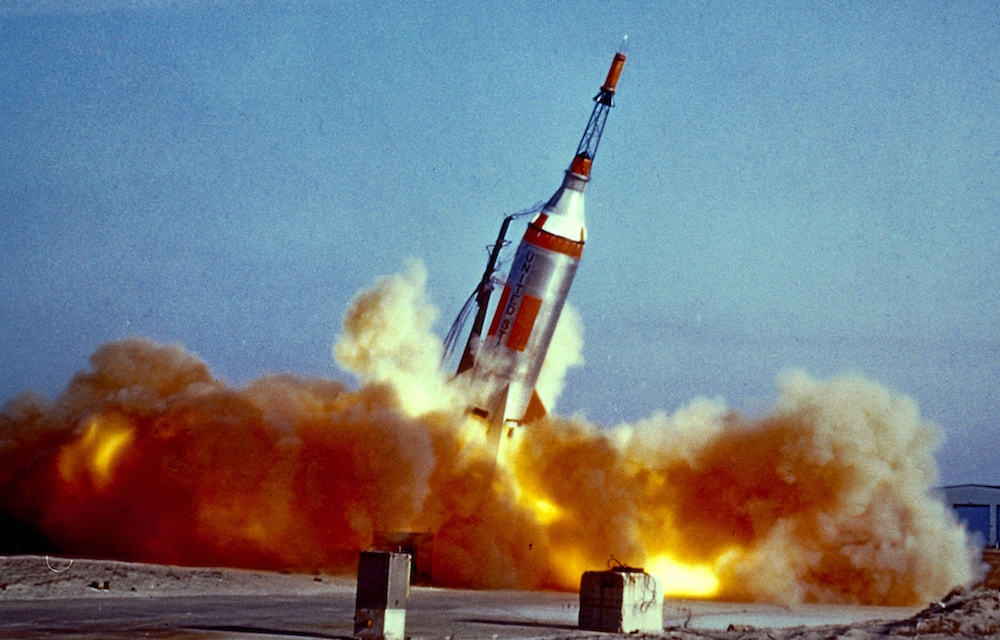
Following the recent successes of the CRS-6 Dragon launch toward the International Space Station (ISS) on 14 April and last week’s flight of the TurkmenÄlem52E/MonacoSat payload to Geostationary Transfer Orbit (GTO), the roar of rocket engines from Space Launch Complex (SLC)-40 at Cape Canaveral Air Force Station, Fla., is becoming almost commonplace. However, on Wednesday, 6 May, SpaceX—the Hawthorne, Calif.-based operator of the Falcon 9 v1.1 launch vehicle and recent co-winner of a slice of NASA’s $6.8 billion Commercial Crew transportation Capability (CCtCap) contract—will execute its most ambitious exercise to date, ahead of its 2017 goal to deliver U.S. astronauts to the space station, aboard a U.S. spacecraft, and from U.S. soil, for the first time since the end of the shuttle era. The long-delayed Pad Abort Test of a specially instrumented Dragon spacecraft will last under two minutes from pad departure through splashdown in the Atlantic Ocean, with most of that distance covered in the first 25-30 seconds, but carries profound implications for the future prospects of the Commercial Crew endeavor.
As described by NASA Commercial Crew Partner Manager Jon Cowart and SpaceX Vice President of Mission Assurance Hans Koenigsmann in a briefing at the Kennedy Space Center (KSC), last Friday, the Pad Abort Test will see the launch of a Dragon crew capsule and unpressurized trunk from SLC-40, during a “window” which opens at 7 a.m. EDT Wednesday. Present estimates from the 45th Weather Squadron at Patrick Air Force Base suggest a 50-percent likelihood of rain and a 10-percent probability of lightning in the morning hours, with high surface winds considered a primary violating factor for the Pad Abort Test to go ahead.
The 21,000-pound (9,525 kg) stack will be powered aloft by eight SuperDraco hypergolic thrusters, built into the side walls of the spacecraft. These will produce a combined impulse in excess of 120,000 pounds (54,430 kg) and deliver the Dragon to an altitude of about 5,000 feet (1,500 meters) in about six seconds, before the vehicle executes a parachute-assisted splashdown about 6,000 feet (1,800 meters) to the east, in the Atlantic Ocean. The entire test—from departing SLC-40 to hitting the water—should last no more than two minutes.
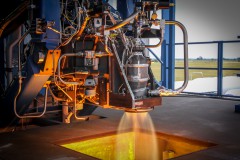
The vehicle is heavily instrumented with gyroscopes, temperature sensors, acoustics sensors and cameras, although much attention has been focused upon the presence of a crash test dummy, nicknamed “Buster”, who will ride aboard one of Dragon’s seven seats. The other seats will be weighted to simulate the presence of a full crew. It is expected that the dummy will be subjected to peak G-loads of up to 4.5 G during the most extreme points of the ascent. Buster’s contribution and those of the other instrumentation will be a critical asset as SpaceX and NASA move towards an In-Flight Abort, later this summer, and full certification of the spacecraft, which is expected to fly unpiloted in late 2016 and in a crewed capacity sometime early the following year.
Pad abort tests in advance of U.S. piloted missions are nothing new and were conducted as long ago as the late 1950s to evaluate escape mechanisms for the Mercury capsule, which sought to transport America’s first man into space. During the build-up to Project Mercury, it was recognized that a relatively inexpensive system was needed to perform a series of tests of the launch abort apparatus and extract the capsule from a failed booster. The result was the “Little Joe”—conceived in the early spring of 1958 by National Advisory Committee for Aeronautics (NACA) engineers Max Faget and Paul Purser—which became the first rocket developed specifically for the purpose of qualifying a piloted spacecraft. Costing $200,000 per unit, Little Joe was five times cheaper than the Redstone booster and more than ten times less expensive than the Atlas.
The vehicle would be propelled by a total of eight solid-fueled engines, usually configured with four large Castor main motors, supplemented by four Recruit auxiliary motors. These were arranged to fire in various sequences, dependent upon the required trajectory of each mission, and were “canted” in order that their respective thrust axes passed through a point about halfway between the centers-of-gravity for the “loaded” and “burned-out” conditions. “I started out playing with the idea of taking four of the largest solid-propellant rockets that we had in our stable at that time,” Purser explained in a 1999 NASA oral history, “and putting them together and firing two of them, and then later firing the other two, to carry the spacecraft up to pretty high speed and altitude and try the separation.”
Little Joe’s exact thrust at the instant of liftoff varied, but its maximum design impulse was around 250,000 pounds (113,400 kg), which made it theoretically capable of lifting a payload of up to 3,940 pounds (1,780 kg) onto a ballistic trajectory with an apogee of close to 100 miles (160 km). In so doing, the booster would closely mirror the kind of aerodynamic conditions that a crewed Mercury-Atlas would encounter during the early stages of its ascent. Meanwhile, Little Joe’s launch abort system was provided by Grand Central Rocket Company’s 1KS52000 rocket motor, equipped with a trio of canted nozzles to pull a “boilerplate” Mercury capsule away from the booster at altitude. This could produce a maximum 52,000 pounds (26,600 kg) of thrust. Finally, the Atlantic Research Corp. provided a tower-jettison motor, which typically generated 785 pounds (356 kg) of propulsive yield and burned for 1.3 seconds.
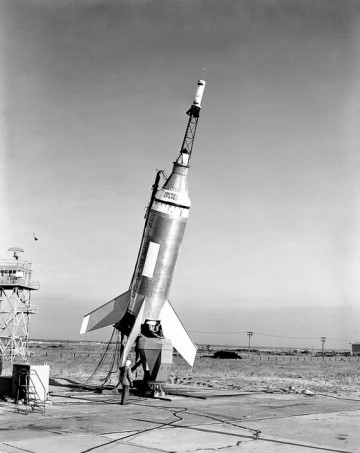
Following its conception, initial design work led to the award of a formal contract in December 1958 to the Missile Division of North American Aviation. Under the terms of the contract, seven Little Joe airframes and one launcher were to be delivered to the Langley Research Center in Hampton, Va.—by now under the control of the newly-formed National Aeronautics and Space Administration (NASA)—at three-weekly intervals, beginning in June 1959. As circumstances transpired, the hardware was delivered slightly ahead of schedule, with the first boosters arriving in Virginia in late May and the final shipment in early October. Each of the two-stage Little Joes stood about 55 feet (16.8 meters) tall and 6.7 feet (2 meters) in diameter and weighed some 43,000 pounds (20,000 kg). The total span across the four wedge-shaped aerodynamic fins at its base, which ensured static stability at velocities of up to six times the speed of sound, was 21.3 feet (6.5 meters).
In fact, it was the presence of this quartet of fins which earned Little Joe its moniker, after a roll of four in craps. “If you’ve ever played dice and you look at the four on a die with rounded corners, and its four dots, just like the four rockets that we had,” recalled Purser. “Little Joe is actually two deuces, but it’s also four and the die with four on it—one die with four spots—and that’s where Little Joe came from.”
The first Little Joe flight (designated “LJ-1”) took place on 21 August 1959 from Launch Area (LA)-1 at Wallops. Described as a “Max Q Abort and Escape Test”, its core objective was to evaluate the performance of the abort system under the most severe dynamic loads anticipated during a Mercury-Atlas launch. However, the test went badly. About 35 minutes before liftoff, the batteries for the rocket’s programmer and destruct system were in the process of being charged. All at once, there came an explosive flash and a roar, which sent the watching photographers and engineers diving for cover. When the smoke cleared, it became apparent that only the capsule/escape tower had launched—on a trajectory very similar to a pad abort, reaching an apogee of about 2,000 feet (610 meters)—whilst the Little Joe booster itself had not fired and remained intact on the ground. Approaching apogee, the clamping ring which attached the escape tower to the capsule was released and pyrotechnics were fired. Overall, the 20-second test traveled a distance of about a half-mile (0.8 km) and the boilerplate Mercury came crashing back to Earth.
Four weeks later, a five-member investigation committee concluded that an electrical leak—variously described as a “transient”, a “ghost voltage” or just a glitch in a relay circuit—had induced the premature ignition of Grand Central’s 1KS52000 rocket motor. The batteries had been charged and, when they attained full capacity, the sequencer for the abort system was actuated. Sensing insufficient altitude, it had responded by firing the squibs and boosting the capsule/escape tower away from the Little Joe. Unfortunately, there was insufficient power in the batteries to jettison the tower and deploy the capsule’s parachutes, condemning both to a watery grave. “It wasn’t the design of the pyrotechnic,” admitted Guy Thibodaux, then-chief of Langley’s High Temperature Materials Branch, “it was the design of the pyrotechnic circuitry, actually, that caused that particular problem.”
“We heard the news a few hours later, both good and bad,” wrote Chris Kraft—then a supervisory aeronautical research engineer at Langley and subsequently a senior figure within NASA management—in his autobiography, Flight. “The test was a failure. But though it wasn’t part of the plan, we knew that the escape system could handle an abort straight from the pad.”
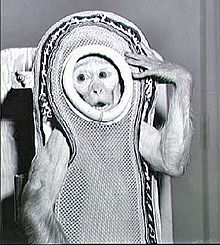
Although the capsule and the escape tower were lost, the Little Joe remained intact and was utilized again for a repeat test (“LJ-6”) on 4 October 1959. This time, the focus on Max Q performance was deleted and the emphasis was placed instead upon demonstrating the general reliability of the booster itself. A boilerplate Mercury capsule and an inert escape tower were successfully lofted to an apogee of 37 miles (60 km), covering a range of 79 miles (127 km) and reaching 3,075 mph (4,950 km/h), before the Little Joe was remotely destroyed to trial the flight termination system.
With the hardware thus proven, the next phase focused upon the mysterious region of Max Q—the region of maximum aerodynamic turbulence upon the vehicle’s airframe, occurring about a minute into flight—and the next Little Joe (designated “LJ-1A”) was launched on 4 November 1959. The behavior of the boilerplate Mercury capsule’s main and drogue parachute deployment characteristics was a specific mission objective. The eight-minute flight began successfully at 9:30 a.m. EST, with the ascent profile described as “straight and true”, until the Little Joe was out of sight. An on-board sensor was supposed to indicate when the correct abort dynamic pressure had been attained, whereupon the escape tower’s motor would fire. However, for reasons which were never completely understood, the tower did not fire until ten seconds after Max Q. That said, the mission reached a peak altitude of nine miles (14.5 km), covered a range of 11.5 miles (18.5 km) and achieved a maximum speed of 2,021.6 mph (3,254 km/h). The parachute deployment and recovery of the Mercury capsule from the Atlantic Ocean were satisfactory.
Since the next Little Joe (LJ-2) was already committed to conducting a series of aeromedical investigations, a repeat of the Max Q test was delayed until early the following year. As long ago as March 1959, NASA and Air Force personnel had considered flying live organisms aboard several Little Joe missions. At one stage, pigs were considered as test subjects, but were eliminated when it became clear that they could not survive long periods on their backs, and it was ultimately decided to fly a pair of rhesus monkeys (Macaca mulatta), named “Sam” and “Miss Sam”. Their names originated from the acronym of the facility which reared them, the School of Aviation Medicine (SAM) in San Antonio, Texas. The LJ-2 mission sought to understand the performance of the Mercury capsule under high-Mach conditions and low dynamic pressures, as well as ascertaining how well Sam responded to the peculiar microgravity environment.
At 11:20 a.m. EST on 4 December 1959, Sam—and several other biological passengers, including barley seeds, rat nerve cells, neurospora, tissue cultures and small packets of insects—was launched from Wallops and reached a peak altitude of 55 miles (88 km), before his boilerplate Mercury capsule parachuted to a safe splashdown in the Atlantic and recovery by the USS Borie. “At launch, the four Recruit rocket motors and two of the Castor rocket motors fired to give a thrust of about 260,000 pounds (118,000 kg,” noted NASA’s LJ-2 post-flight report. “The Recruits burned out after about two seconds and the two Castors burned out at about 30 seconds. The remaining two Castors ignited at 23 seconds, giving an overlap of about seven seconds for the two stages. These two Castors then thrusted until 58 seconds. The escape tower ignited and pulled the spacecraft away from the launch vehicle.” Shortly afterwards, at 69 seconds, the escape tower was jettisoned and LJ-2 and Sam began their parachute-assisted descent. Sam’s mission lasted just over 11 minutes and traveled a distance of 194 miles (312 km), but had actually attained an altitude about 100,000 feet (30,500 meters) lower than intended, due to a windage error, and experienced three minutes of microgravity exposure, rather than four. Nevertheless, Sam’s mission achieved full success across all three orders of its pre-planned test objectives.
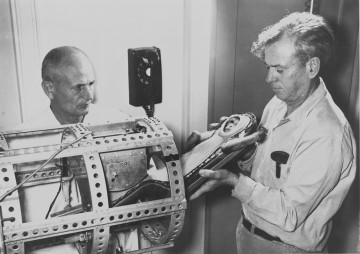
Seven weeks later, at 9:23 a.m. EST on 21 January 1960, Miss Sam was launched atop the LJ-1B mission, with a scientific emphasis upon testing her nervous system in a series psychomotor performance tasks. She reached a peak altitude of 9.3 miles (15 km), a velocity of a little more than 2,000 mph (3,200 km/h) and a range of 11.7 miles (18.9 km) over the Atlantic Ocean. The escape tower fired successfully, boosting Miss Sam a further 250 feet (76 meters), before the boilerplate Mercury capsule parachuted back to Earth.
Despite being badly shaken by the ignition of the escape tower—which rendered her temporarily unresponsive to stimuli and induced nystagmus, an involuntary rolling of the eyeballs—Miss Sam survived the 8.5-minute flight, experiencing weightlessness for 28 seconds, and was recovered by a U.S. Marine Corps helicopter and returned to Wallops within about 45 minutes. “You have to realize that Little Joe goes off at about 7.5 G, which is a fair lick, going up,” remembered former Project Mercury Landing System Development engineer Rodney Rose in a 1999 NASA oral history, “and then when the escape motor goes off and pulls the capsule off, the animal gets a total negative-to-positive G…of nearly 20 G.” Both rhesus monkeys had been trained to pull levels whenever a light glowed on the instrument panel, receiving banana pellets or electric shocks for correct or incorrect responses, but Miss Sam proved unresponsive for 30 seconds. “In spite of the shots of electricity to her foot,” recalled Rose, “she refused to work until the drogue chute came out and then she started hitting the button again.”
Betwixt the safe return of Miss Sam and the next Little Joe flight, NASA undertook a “Beach Abort” from Wallops. Unlike its immediate predecessors, which had sought to gather data prior to and during an in-flight abort from the booster, this test instead focused on the performance of the escape, parachute and landing systems, together with recovery operations, in an abort executed directly from the launch pad. On 9 May 1960, a boilerplate Mercury capsule and attached escape tower were fired from ground level—in a fashion not wholly dissimilar from Wednesday’s Dragon Pad Abort Test—and attained a peak apogee of 2,465 feet (751 meters), traveling a little more than a half-mile (0.8 km) in 76 seconds. The Beach Abort have proven highly successful. “The only significant defect noted from this test,” NASA reported in the aftermath, “was a relatively poor separation distance when the [escape] tower jettisoned.”
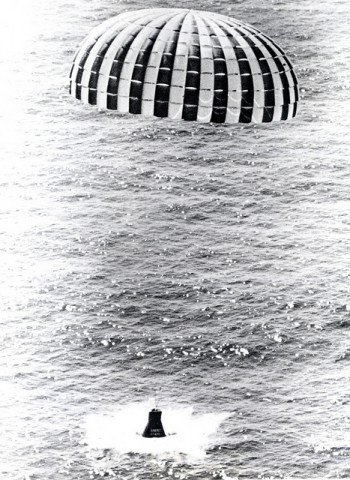
With five Little Joe missions thus completed, the next flight (LJ-5) carried an actual Mercury capsule from prime contractor McDonnell’s production line and was launched from Wallops at 10:18 a.m. EST on 8 November 1960. This particular mission had been in the planning stages for over a year and was designed as the first qualification of an actual production Mercury to sustain abort conditions within the region of Max Q. However, frustratingly, the mission failed when the escape tower motor and the tower-jettison motor both fired prematurely, some 15.4 seconds after liftoff, and the entire Little Joe/capsule—which reached a peak altitude of just over ten miles (16 km)—was destroyed when it hit the waters of the Atlantic Ocean, a mere two minutes later. Salvage operations recovered about 60 percent of the booster and about 40 percent of the capsule.
A follow-up test, LJ-5A, launched at 11:49 a.m. EDT on 18 March 1961, also met with misfortune when it too suffered a premature ignition of its escape tower motor, 43 seconds into the ascent. “The capsule tumbled immediately upon separating and narrowly missed the booster as it decelerated,” recalled Warren North, then-chief of Manned Satellites at NASA Headquarters in Washington, D.C. “The retropack and escape tower were inadvertently jettisoned or torn off as the capsule tumbled. Apparently, the centrifugal force and/or the escape tower removed the [capsule’s] antenna canister, deploying both the main and reserve parachutes.” The parachutes—which would endure aerodynamic loads six times higher than expected—opened at 40,000 feet (12,200 meters) and the capsule splashed down in the Atlantic, having incurred relatively minor damage.
The 5.5-minute mission reached an altitude of 7.7 miles (12 km) and attained a maximum speed of 1,783 mph (2,869 km/h). Subsequent investigation revealed that both LJ-5A and LJ-5A failed principally due to structural deformations near to the clamp rings which fouled the electromechanical separation systems.
The capsule was recovered and repaired, before flying again on the final Little Joe mission, LJ-5B, which flew at 9:03 a.m. EDT on 28 April 1961, only a week before a Redstone booster was destined to deliver America’s first man into space. On this occasion, the vehicle and Mercury capsule performed virtually as intended, achieving a peak altitude of 2.8 miles (4.5 km), a range of nine miles (14 km) and a maximum speed of 1,780 mph (2,865 km/h). Despite a four-second delay in the firing of one of Little Joe’s motors, and a consequently low-pitched trajectory, the 5.5-minute flight succeeded in its core test objectives and proved that the escape system could perform under the harshest aerodynamic conditions anticipated in a piloted Mercury mission.
Of course, NASA was keenly aware that the Soviet Union was closing on its own goal of launching a man into space. “There was a move afoot to put Al Shepard in a Little Joe, because we knew the Russians were going to go,” remembered Rodney Rose. “Some people were pushing to just put Shepard in a couch with a bottle of oxygen and a mask and send him off on a Little Joe, because it did basically the same flight as his Mercury flight did. That got squashed by Headquarters; they said “This is a scientific program, not a publicity stunt!” So we didn’t do it, and the Russians beat us into space.”
The second part of this article will appear tomorrow.
Want to keep up-to-date with all things space? Be sure to “Like” AmericaSpace on Facebook and follow us on Twitter: @AmericaSpace
Missions » ISS » Missions » ISS » CCDev » Missions » ISS » CCDev » Crew Dragon PAT »



$6.8 billion for Commercial Crew transportation Capability (CCtCap) and half of that would have taken us back to the Moon with Sidemount. A profound failure in decision-making and leadership.
NewSpace is the worst thing that has ever happened to space exploration.
The public is being scammed for billions to subsidize the dead end of NewSpace LEO tourism.
SLS is the Obi-Wan Kenobi rocket- the only for a real space program.
Sorry, SLS is the Obi-Wan Kenobi rocket- the only hope for a real space program.